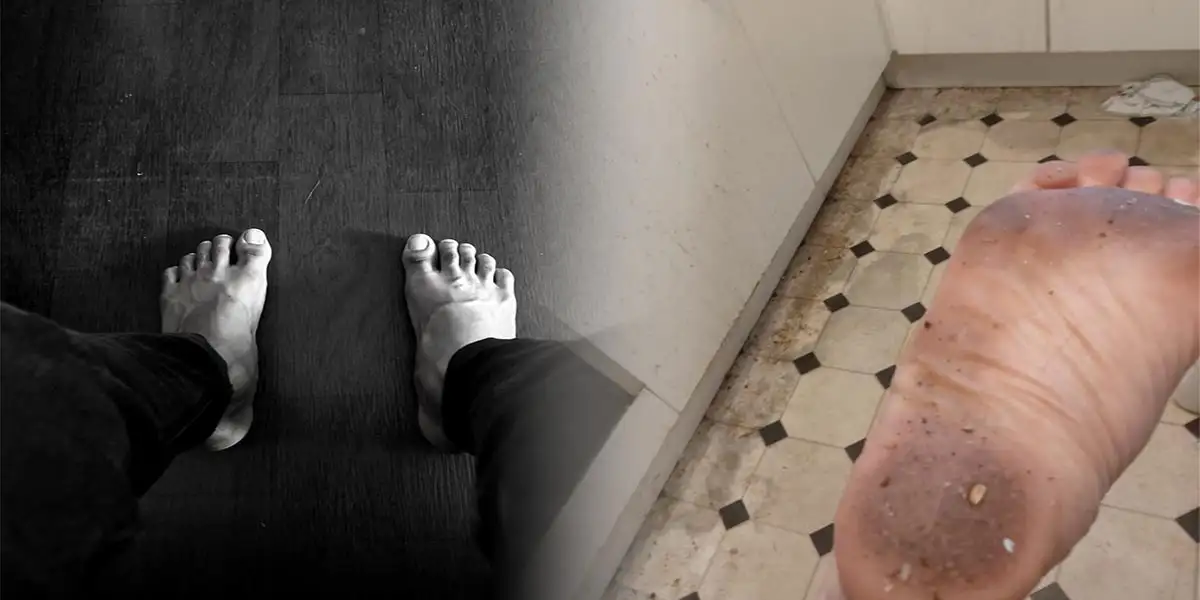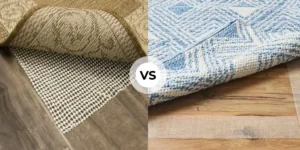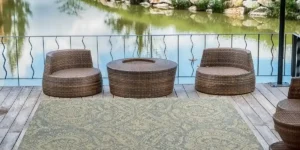It may seem harmless to walk barefoot on the floor, but it can result in black dirty feet.
According to the Mayo Clinic, dirty feet can lead to many fungal diseases like athlete’s foot (tinea pedis).
Usually, this happens when your feet sweat excessively.
Unfortunately, or fortunately, sweat is one of the most common causes of black feet.
Yet, it is common for homeowners to experience black feet despite having a clean floor.
But many people don’t understand why their feet turn black when they walk on the floor.
Generally, black feet are caused by sweat combined with body oils and dust that accumulate on your floor.
As you walk on the floor, these particles stick to the soles of your feet, causing them to turn black.
This is more likely to occur when walking barefoot.
It is also possible to get black feet by using the wrong cleaning products, having an old floor mat, or using a dirty mop and bucket to clean the floor.
Fortunately, there are solutions to these main reasons to fix the issue.
In this article, we have explained why your floors make your feet black and how to clean them thoroughly.
So, let’s get started!
You Might Also Like:
- How to Clean Shaw Vinyl Plank Flooring? (Beginners Guide)
- How to Dry Water Under Laminate Flooring? (A Step-By-Step Approach)
7 Main Reasons Why Your Floor Makes Your Feet Black
1. A Dirty Floor
Having dirty floors is the most common and plain reason that your feet turn black.
Thus, mopping your floors at least once a week is the most effective way to prevent your feet from turning black.
Besides posing a health hazard, dirty floors can harbor bacteria that can make people sick.
As well as being unattractive, dirty floors are unhygienic and unsightly.
Also, if the floor is dry, you can track dirt from outside or inside surfaces that you did not notice.
Yet, in homes with heavy traffic and visitors, cleaning the floors may be necessary as often as daily.
Depending on how much action the floors receive.
Solution: To prevent a dirty floor from making your feet black. Start by sweeping or vacuuming to remove debris. Then, mop with a suitable floor cleaner and clean water.
Also See: How to Clean Shaw Vinyl Plank Flooring? (Beginners Guide)
2. Having a Worn-Out Floor Mat
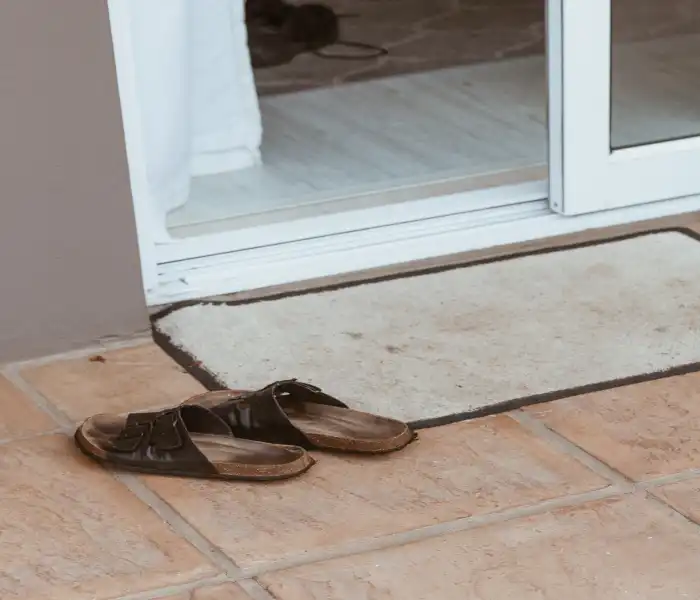
Worn-out floor mats are a common problem in many households.
It is common for worn-out or old carpets to become breeding grounds for bacteria and sweat from your feet.
Dirt and dust can build up on a thin, tattered floor mat. Which eventually gets transferred to your feet, causing your feet to turn black.
If that is the case, it’s time to replace the worn-out mat. Or clean the old one more often.
As worn-out floor mats accumulate dust, it can make your feet black and dirty. Which is not suitable for your health.
Solution: Replace your worn-out floor mat if it’s causing your feet to turn black. Invest in a new, high-quality mat to keep your floors clean and your feet free from dirt and grime.
Also See: How To Clean Your Commercial Floor Mats?
3. Wet Feet & Shoes
If you wear shoes that absorb sweat and don’t clean them, your feet can also turn black.
To prevent this, it is important to wash and dry your shoes regularly.
You can also use foot powder to absorb sweat and keep your feet dry.
Wearing socks can also help absorb sweat and protect your feet from turning black.
Additionally, wet feet tend to catch more dirt from the floor, which is one reason your floor is black.
Solution: First, dry your feet thoroughly. Then, clean your shoes to remove trapped dirt and moisture. This will help keep your feet clean and prevent them from turning black.
Also See: How to Dry Water Under Laminate Flooring? (A Step-By-Step Approach)
4. Wood Floor Sealers
Wood floor sealers themselves do not make your feet black. They protect and enhance the beauty of your wooden floors.
But, dirt and debris can get trapped in the sealant over time, making it ineffective. When you walk on a sealed floor.
Especially with bare feet, these particles may adhere to your skin. Causing your feet to appear black.
This phenomenon occurs when the sealant’s protective layer becomes compromised. Or cleaning and maintenance routines are neglected.
It’s not the sealer’s fault but rather a sign that the floor needs cleaning and maintenance.
Solution: Clean your sealed wood floor, remove debris, and maintain a barrier-free from contaminants.
5. Using a Dirty Mop And Bucket
Don’t keep cleaning your floors with the same dirty mop and filthy water.
Make sure the mop is cleaned, not just washed. Also, if your old mop is worn out, throw it away.
And buy a steam mop and several different pads to clean the floor instead of getting a new mop and bucket.
Generally, a mop and water are not enough to clean a floor.
That’s why your feet look black after walking on the floor since you’re distributing the mess.
You just push wet dirt around your floor when you use a mop to soak up spills, not kill bacteria.
Solution: Invest in a good mop that has replaceable pads to do a good job of cleaning floors. You can also easily replace the absorbent, changeable pads as you work.
Must See: How to Clean Shaw Vinyl Plank Flooring? (Beginners Guide)
6. Clean or Replace the Air Intake Filter, Fans & Vents
Fans, vents, and air intake filters may be one of the primary reasons your floor makes your feet look black.
Dust comes through and settles on the surface, making it dirty despite looking as clean as new.
Air purifiers in almost every home are not harmful to our health. But that’s the only way dust and grime get into our homes.
So, I recommend you clean your fans and vents and replace your air intake filter.
Make sure to replace all filters on all appliances. And ensure combustion-based appliances are functioning perfectly.
Solution: Consider investing in air filtration systems. This improves indoor air quality and reduces the issue.
7. Wrong Cleaning Products
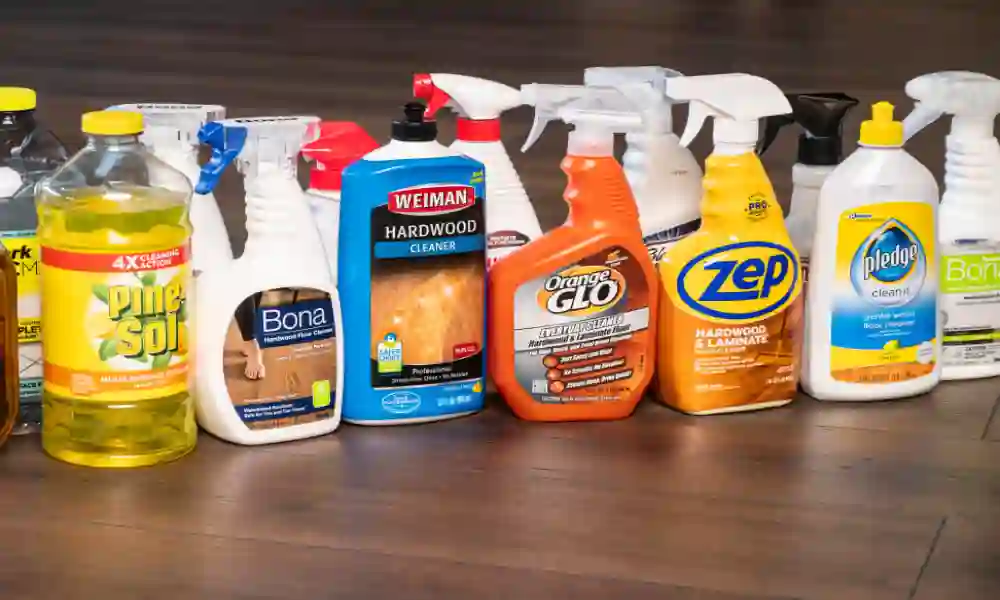
We should be careful about the cleaning products we use.
We all know that using the wrong product can ruin our flooring, but what about when it comes to our feet?
If you are using a cleaner not made for floors, it might not be as effective as a floor cleaner.
You have to scrub harder to get rid of dirt, which will tear the protective layer of your flooring.
Then the flooring will start to accumulate dirt more frequently. And it will cause your feet to become black.
Understanding the difference between the wrong cleaning products and the right ones is essential.
It occurs when you use a cleaning product containing bleach.
Also, it can happen when using a product with ammonia, commonly used to clean carpets and upholstery.
These products are not meant for your floors; they can harm your feet if you walk on them barefoot.
Solution: Make sure you use the right cleaning product for your floor. To find out where to find the best cleaner, refer to the instructions provided by the floor manufacturer.
Also See: Can You Use Pine Solution for Vinyl Flooring? (Answered!)
Black Foot Remediation: The Best Way to Clean Them
You don’t need to do anything complicated to clean dirty feet that are black due to oil and dirt. Just follow these steps:
- To begin with, fill a tub with some warm water and squeeze lemon juice into it. It will act as a chemical peel on your feet. Lemons have a low pH, so they exfoliate dirt and loosen it.
- Next, you’ll want to make your exfoliator. Use large grain salt and sweet almond oil. Then, mix that with your favorite body wash, and it’ll remove the dead skin cells that are locking in that dirt and oil.
- Thirdly, you need to soften your skin and seal it in moisture while preventing it from becoming dirty. You can do this by making your balm from shea butter, beeswax, and cocoa butter. Mix them and let them cool before massaging them on your feet.
Tips for Preventing Black Feet on the Floor
- Regular Cleaning: Maintain a strict cleaning schedule for your floors. To keep dust and dirt away. Regularly sweep and mop your floors, paying attention to high-traffic areas.
- Quality Door Mats: Place quality floor mats at your home’s entry points. As a result, your feet will be less likely to be blackened by dirt and debris trapped on these mats.
- Remove Shoes: Make sure family members and guests remove their shoes at the door. To avoid tracking dirt inside.
- Replace Worn Mats: It is very important to replace your worn floor mats to keep your home clean.
- Seal Floors: You can create a protective barrier that makes cleaning much easier. By applying a floor sealant to the floor.
A Step-By-Step Guide to Deep Clean Your Floor
The only way to get rid of the black feet problem is by deep cleaning the floor properly.
Follow the below-mentioned guide to deep cleaning your floor.
Step 1: Remove the Objects From the Room
Start by removing appliances and furniture from the room. It will prevent interruptions while you are cleaning the floor.
Additionally, this method allows you to clean the entire floor thoroughly.
By doing so, you will avoid damage to your furniture caused by sprinkles of cleaning solution.
Step 2: Scrape Up Any Debris on the Floor
Using a bristle brush or butter knife, clean up any debris from the floor, such as wax or residue.
When it comes to mopping, I always find that getting down on my hands and knees to scrub and then wipe with a towel works better.
If you have vinyl or laminate flooring, you should use a plastic scraper rather than a metal one. This way, you will not damage the flooring.
Step 3: Completely Vacuum or Sweep the Area
Next, sweep or vacuum the entire floor thoroughly. I prefer a vacuum cleaner because it is fun, but vacuum cleaners collect more dust than sweepers.
Step 4: Cleaning the Floor with a Dry Mop
Now install the mop pad inside the mop.
Simply dry and mop the entire surface with it. You will see that a lot of black dirt, hair, and unseen dirt will be accumulated by the mop.
Using this long-handled mop, you can also reach those areas that are difficult to reach with a vacuum.
Additionally, make sure you wash the mop pad after cleaning it.
Step 5: Using a Wet Mop, Clean the Floor
The next step is to mix your cleaning solution with water, ideally using a solution formulated for your flooring type.
Once that is done, fill a spray bottle with the cleaning solution, spray it on the entire floor, and start mopping.
Also See: Will Acetone Damage Laminate Floor? (Explained)
Step 6: Allow Everything to Dry
Finally, let the floor dry completely, and then place your appliances and furniture back in place.
It would be best if you also cleaned the appliances and furniture a bit.
Also, ensure you wash that mop pad before using it again.
Dust and debris from it can be transferred to the cleaned floor, turning your feet black.
Check Out More Articles Related to Flooring
- Cork vs. Foam Underlayment: Which is Right for Me?
- Do You Put Vinyl Flooring Under Appliances? (Answered & Explained)
- How to Remove Sticky Residue from Vinyl Flooring? (Full Guide)
- Can I Use Laminate Flooring On Walls? (Installation Guide Included)
- How to Remove Scuff Marks from Laminate Flooring? (4 Helpful Solutions)

